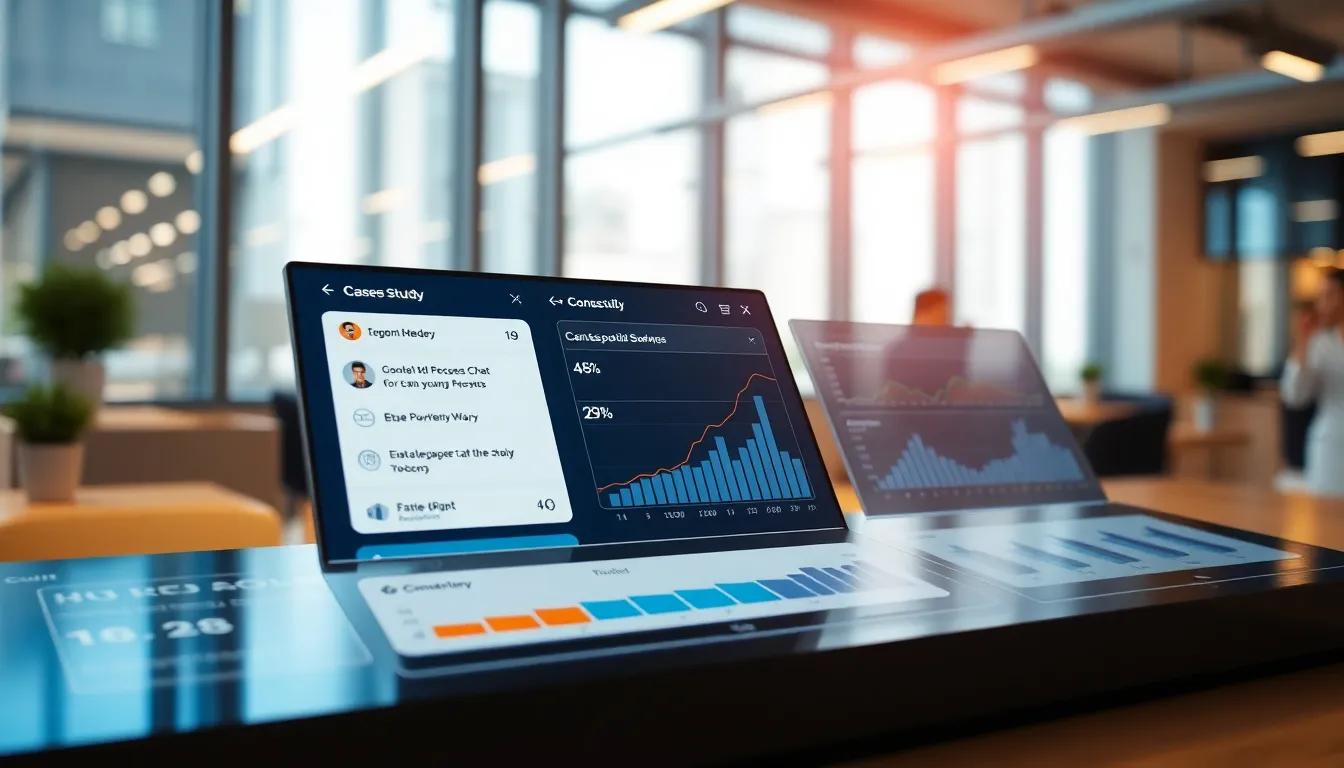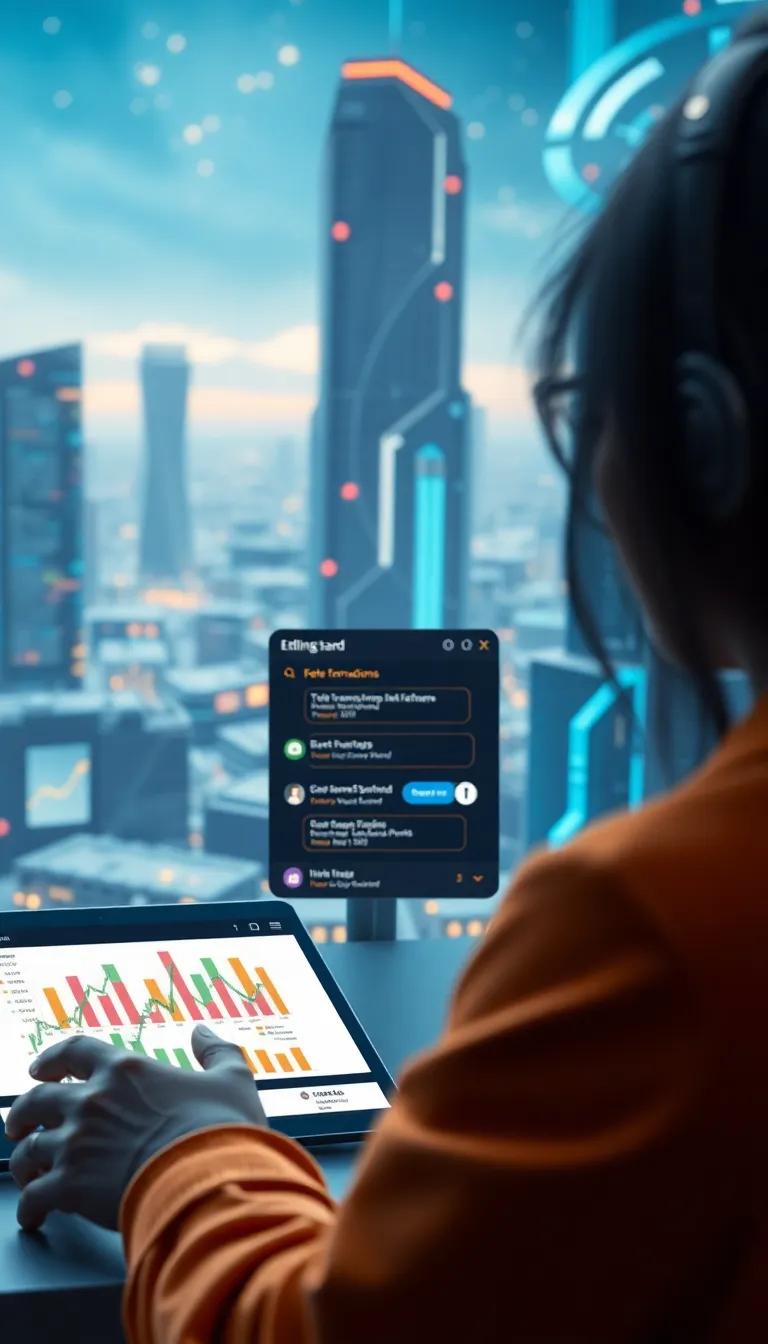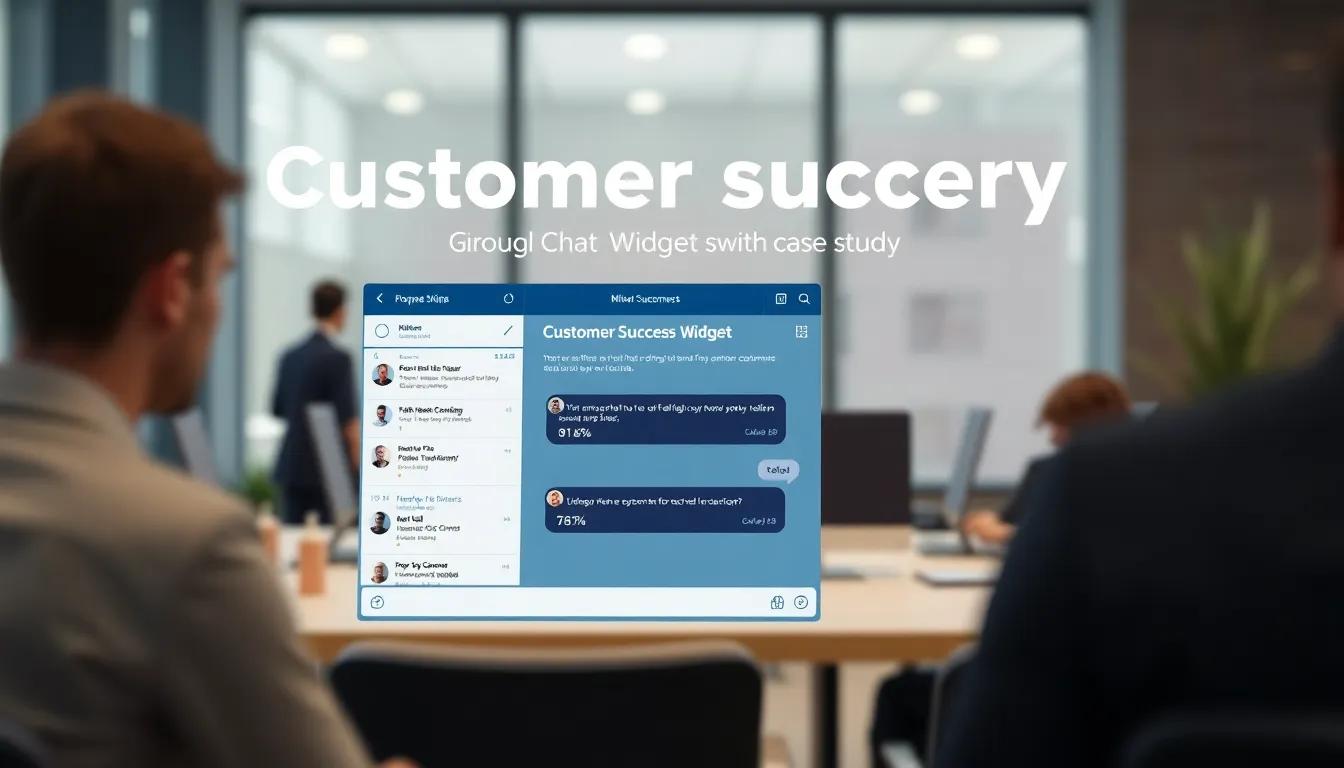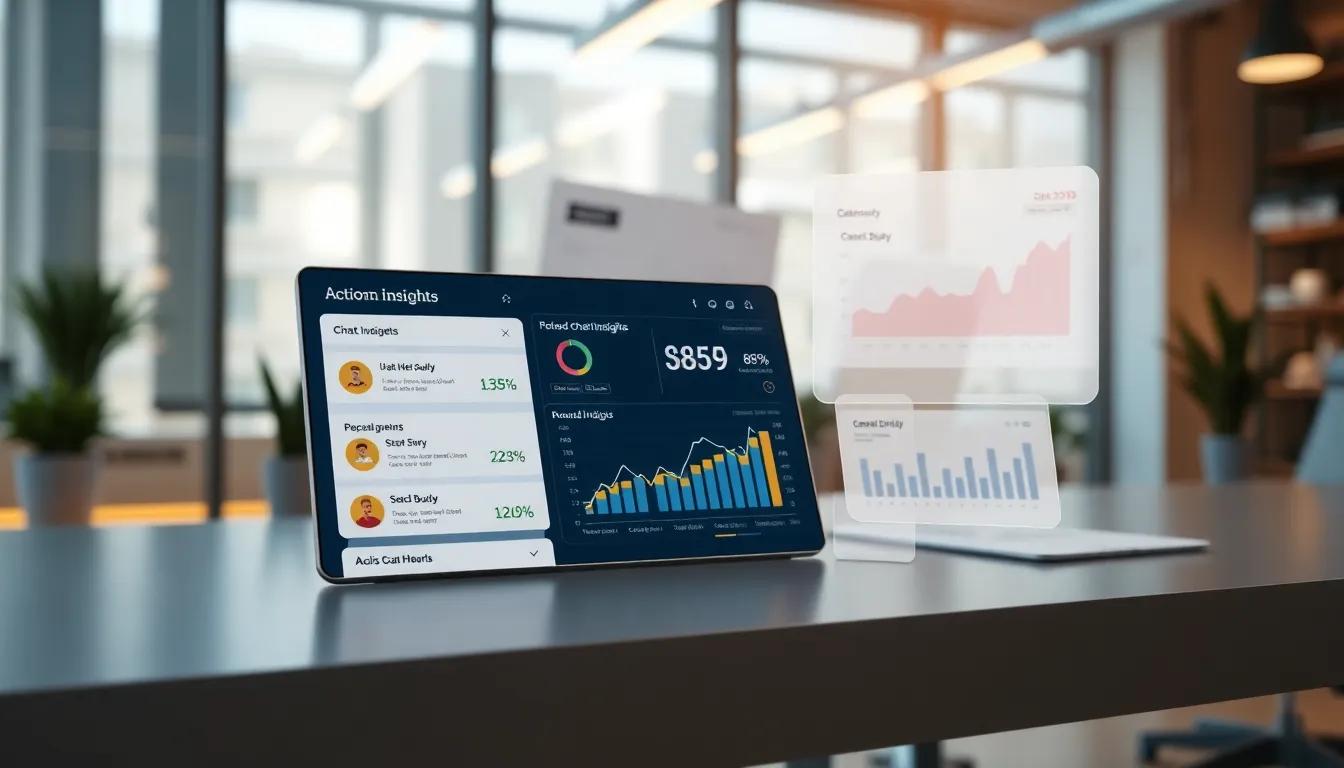Introduction
In the digital era, where instantaneous communication is vital, integrating a website chat widget can significantly elevate user experience. This tool not only facilitates real-time interaction between customers and businesses but also offers valuable insights through usage analysis. By understanding how visitors interact with the chat feature, businesses can pinpoint areas for improvement, optimize staffing, and ultimately enhance customer satisfaction. Furthermore, a well-implemented chat strategy can lead to increased conversions, making it an essential aspect of a robust online presence.
Usage analysis, in the context of a website chat widget, serves as a powerful instrument for enhancing user engagement. By scrutinizing data such as chat frequency, response times, and user feedback, organizations can tailor their approach to meet client expectations better. This article delves deep into the mechanisms of usage analysis, elucidating how to utilize this information effectively for improving chat interactions and maximizing overall engagement.
Understanding Usage Analysis Maximize Engagement with a Free Website Chat Widget
Usage analysis refers to the systematic examination of how users interact with digital platforms, providing significant insights into user behavior and preferences. In the context of a website chat widget, usage analysis entails gathering data on user interactions, response times, frequency of use, and overall satisfaction. By studying this data, businesses can identify patterns and trends that offer valuable information for enhancing user engagement.
The importance of usage analysis in digital interactions cannot be overstated. With the increasing significance of customer service and engagement in driving conversions, understanding how users utilize chat widgets becomes pivotal. By evaluating metrics such as the number of chats initiated, the duration of conversations, and the resolution rates, businesses can glean insights into customer needs and areas for improvement. Tracking how often users return to utilize the chat feature also indicates the widget’s effectiveness in addressing concerns promptly.
Specifically for website chat widgets, usage analysis provides immediate feedback on how well the tool functions in real-time customer interactions. For instance, if data reveals that users often exit the chat before receiving help, this may suggest that the widget is not meeting their needs or that representatives are not engaging effectively. Furthermore, analyzing the timing of chats might reveal peak hours when user support demands increase, allowing for better staffing strategies.
Another important facet of usage analysis involves understanding user demographics. Knowing which segments of the audience engage with the chat widget most frequently can help in tailoring communication styles and responses that resonate better with different user groups. This way, personalized interactions become more feasible, enhancing the overall chat experience and improving customer satisfaction.
Leveraging insights obtained from usage analysis is essential for maximizing engagement with a free website chat widget. By continuously monitoring and assessing user interactions, businesses can refine their approach, ultimately leading to enhanced user interaction and satisfaction. The relationship between understanding usage and fostering engagement is a fundamental aspect that companies can harness to create effective, supportive, and responsive digital environments.
The Essentials of a Website Chat Widget Key Components and Functionalities for Maximizing Engagement
Core Elements of Effective Chat Widgets
To maximize engagement through a website chat widget, one must focus on its essential components and functionalities. At its core, an effective chat widget must feature user-friendly design, intuitive navigation, and robust integration capabilities. A well-designed interface ensures that visitors can quickly locate the chat feature without confusion. Simplifying accessibility through a prominent position on the site, such as the bottom corner, enhances user interaction and drives engagement rates.
Incorporating artificial intelligence or chatbot functionalities can further enhance user experience by providing instant responses to common inquiries. This real-time assistance can help maintain visitor interest and keep them engaged. However, a balance must be struck between automated responses and human interaction. For more complex queries, options for live agent escalation are necessary to ensure that users receive comprehensive assistance without feeling frustrated. This flexibility accommodates various user preferences, promoting overall satisfaction.
Functionalities That Enrich User Interaction
Various functionalities can enhance the effectiveness of a chat widget. Features such as customizable greetings based on visitor behavior can create a welcoming atmosphere. For instance, recognizing returning users and providing a personalized greeting can build rapport and encourage interaction. Furthermore, proactive chat invitations based on user activity—such as time spent on a page or specific actions taken—can serve as effective engagement triggers, enticing users to participate in a conversation before they feel the need to seek help.
Data-driven insights play a pivotal role in understanding user behavior and preferences. Integrating analytics tools within the chat widget allows businesses to gather essential information about user interactions, chat duration, and common inquiries. By analyzing these metrics, companies can pinpoint areas for improvement, refine their responses, and ultimately enhance user satisfaction. A constantly evolving chat widget that adapts to user needs will foster loyalty and encourage repeat visits.
It is vital for the chat widget to provide a seamless transition across devices. As users navigate from mobile to desktop and vice versa, maintaining continuity in their chat experience can significantly impact engagement levels. By focusing on these key components and functionalities, businesses can create an effective website chat widget that maximizes engagement and boosts user satisfaction.
Implementing Usage Analysis for Optimization Steps to Maximize Engagement with Online Chat Widgets
Understanding Usage Analysis
Usage analysis serves as a critical tool for enhancing the effectiveness of online chat widgets. By monitoring user interactions, businesses can gather comprehensive data reflecting how visitors engage with chat functionality. This data encompasses metrics such as session duration, frequency of interactions, common queries, and user satisfaction ratings. The goal is to extract actionable insights that can inform decisions aimed at improving user experience.
Steps to Implement Usage Analysis
To optimize an online chat widget through usage analysis, follow these key steps:
- Define Key Metrics: Start by establishing the most relevant metrics for your chat widget. This might include response time, resolution rate, and user satisfaction scores. Specify what success looks like for these metrics to track performance accurately.
- Integration of Tracking Tools: Employ analytics tools that can seamlessly integrate with your chat widget. Google Analytics, for instance, can track user interactions and provide insights into visitor behavior. Make sure that the chat tool you are using supports such integration.
- Data Collection: Enable data collection features within your chat system. Consider setting up automatic logging of conversations and user feedback to facilitate an in-depth analysis. Ensure compliance with privacy regulations when collecting user data.
- Analyze Conversation Logs: Conduct regular reviews of conversation logs to identify common themes, user pain points, and frequently asked questions. Look for patterns that might reveal gaps in existing knowledge resources or service offerings.
- Segment Your Data: Break down the collected data into segments based on user demographics, behavior patterns, or sources. This segmentation allows businesses to understand differing user needs and preferences, facilitating tailored engagement strategies.
- Utilize Feedback Loops: Create mechanisms for visitors to provide feedback on their chat experience. Use surveys or rating systems after interactions to gauge satisfaction. This immediate feedback can inform quick adjustments to enhance service delivery.
- Continuous Improvement Cycle: Establish a process for regularly reviewing the insights gained from usage analysis. Utilize these insights to refine and update the chat widget’s capabilities, ensuring a continually improved user experience.
By meticulously implementing usage analysis steps, businesses can craft an online chat experience that resonates well with users, leading to heightened engagement and overall satisfaction.
Enhancing User Engagement Strategies Through Usage Analysis
Strategically Leveraging Insights for Engagement
Utilizing insights derived from usage analysis can significantly enhance user engagement strategies. A thorough examination of user interactions with the website chat widget provides valuable data on preferences, behaviors, and pain points. By analyzing these insights, businesses can implement targeted engagement strategies that resonate with their audience, creating a personalized experience that fosters greater satisfaction and loyalty.
One effective method to leverage insights is through segmentation. Categorizing users based on their engagement levels, queries, and patterns enables businesses to tailor their content and responses accordingly. For instance, users who frequently engage with the chat widget but often abandon the interaction might benefit from proactive chat prompts or educational resources that address common concerns. Conversely, low-engagement users may require more attention through incentivized prompts or personalized greetings to draw them in.
Another method to maximize engagement involves analyzing peak interaction times. If data indicates that chat usage surges during specific hours, businesses can ensure that more agents are available to respond during those times. Furthermore, training chat agents based on user feedback can significantly improve interaction quality. Insights from previous chats can inform training modules, equipping agents with the knowledge to anticipate needs and respond effectively.
Continuous Improvement and Iteration
Regularly evaluating user feedback from chat interactions also plays a vital role in refining engagement strategies. By implementing mechanisms to collect user sentiment following each interaction, businesses can identify areas for improvement and adjust their strategies accordingly. For instance, if users frequently express dissatisfaction with response times or the quality of information provided, adjustments can be made to enhance both the chat widget functionality and the information database available to agents.
A/B testing various engagement tactics can yield invaluable insights regarding what resonates best with users. Whether it’s experimenting with different messaging tones, response times, or even the visuals of the chat interface, businesses can optimize their strategies based on concrete data rather than assumptions. This iterative approach ensures that user engagement strategies evolve in tandem with user expectations, thus maximizing satisfaction and retention rates.
Measuring Success Key Metrics to Monitor for Website Chat Widget Engagement
Defining Metrics that Matter
To gauge this effectiveness, identifying key performance metrics is paramount. These metrics not only reflect user engagement, but also yield insights into chat interactions and overall satisfaction. Several critical metrics should be considered when evaluating performance.
Chat volume indicates the total number of chats initiated through the widget. This metric is vital for assessing user interest and the widget’s role in enhancing interaction. A higher chat volume typically suggests that users find value in the widget’s availability.
Response time is another important metric, as it measures the average time taken for a representative or automated response to reach the user. Quick response times usually correlate with higher satisfaction levels. Potential customers expect prompt replies, and if response times lag, users may abandon the chat, diminishing overall engagement.
Engagement rate is calculated by comparing the number of users who interacted with the chat widget to the total number of visitors on the website. A substantial engagement rate signals that users feel inclined to utilize the chat function, and it can be an indicator of effective placement and visibility of the widget.
Qualitative Insights for Deeper Understanding
While quantitative metrics are vital, qualitative insights from chat transcripts provide a richer understanding of user experience. Analyzing user sentiments expressed during interactions helps identify common pain points or frequently asked questions. Implementing a user satisfaction rating at the end of each chat can also yield valuable feedback that informs future enhancements.
Tracking the conversion rate associated with chat interactions can reveal the widget’s effectiveness in driving actions, such as completing purchases or signing up for newsletters. If conversion rates are low, revisiting chat scripts or revising user prompts may be necessary.
By monitoring these vital metrics, businesses can gain a comprehensive picture of their chat widget’s performance. Armed with this data, organizations can make informed adjustments to enhance user experience and ultimately foster greater satisfaction and loyalty.
Case Studies on Successful Usage Analysis Leveraging Insights to Maximize Engagement with Free Website Chat Widgets
Real-World Success Stories
Businesses across various sectors have harnessed usage analysis to significantly enhance user engagement through chat widgets. These case studies illuminate how analyzing interactions can yield powerful insights and drive improvements in customer service and satisfaction.
One exemplary case is an e-commerce platform that integrated a free chat widget to assist customers during their shopping experience. Initially, the company tracked traditional metrics such as response times and user interactions. However, upon implementing detailed usage analysis, they discovered that 40% of users preferred initiating chats during the checkout process. By capitalizing on this insight, the company tailored their chat support for peak times, resulting in a 30% increase in completed sales. This strategic adjustment not only improved conversion rates but also enhanced user trust and satisfaction.
Another compelling example comes from a software-as-a-service (SaaS) company that utilized a chat widget to offer real-time support. By engaging in thorough usage analysis, they identified that queries related to product onboarding were responsible for the majority of chat interactions. The data indicated that users were often confused by the setup process. In response, the company developed a series of targeted onboarding tutorials and revised their chat responses to address common concerns. As a result, the chat volume related to onboarding issues dropped by over 50%, while customer satisfaction ratings surged as users found the software easier to navigate.
A smaller venture, a local service provider, experienced similar successes. They employed a chat widget to connect with potential customers looking for quotes. Through analysis, the company discerned that many users were not converting due to delayed response times. By actively measuring response times through usage analysis and adjusting staffing levels accordingly, they improved their response times by 25%. This refinement led to a notable increase in customer inquiries and bookings, effectively showcasing how even modest changes based on data can yield substantial results.
Insights to Inform Strategic Decisions
These case studies emphasize the value of implementing usage analysis alongside free chat widgets. By understanding user behavior and preferences, businesses can make informed decisions that not only accelerate engagement but also amplify overall satisfaction. As companies continue to refine their approach based on real-time data, the future holds immense potential for enhanced customer experiences through iterative improvements. Such insights transform chat interactions from a reactive service into a proactive engagement tool, fostering long-lasting relationships with users.
Future Trends in Chat Widgets and Usage Analysis
Emerging Technologies Shaping Chat Widgets
The landscape of chat widgets is rapidly transforming, influenced heavily by advancements in artificial intelligence and machine learning. Future chat widgets are anticipated to incorporate more natural language processing capabilities, enabling them to understand and respond to user inquiries with remarkable accuracy. This shift will not only improve user experience but also raise engagement levels significantly. Enhanced contextual awareness will allow chatbots to provide tailored responses based on previous interactions, making every conversation feel more personalized and relevant.
Alongside AI, the integration of voice recognition technology is likely to redefine user interactions. Users will increasingly favor voice-activated chat options, permitting a seamless conversational flow. This trend signifies a movement away from traditional text-based responses, catering to a broader audience and promoting inclusivity for those with disabilities or different accessibility needs.
Advanced Usage Analysis Techniques
As chat widgets evolve, so does the approach to usage analysis. Businesses are moving beyond basic metrics to more sophisticated analytic tools that offer profound insights into user behavior. Predictive analytics crafted from historical interaction data will enable companies to anticipate user needs and behaviors more accurately. Through these insights, businesses can refine their chat strategies to ensure that the interactions remain engaging and effective over time.
Furthermore, the growing trend of real-time analytics is reshaping how user engagement is monitored. With immediate feedback mechanisms, companies can make quick adjustments to their chat systems based on current user behavior and preferences. This agility allows for ongoing optimization, ensuring that users consistently receive relevant information during their interactions.
Another significant aspect of usage analysis will be the application of sentiment analysis. Through advanced algorithms that gauge user emotions based on their dialogue, businesses can customize interactions dynamically, effectively responding to user moods. This emotional intelligence will help in fostering a more empathetic dialogue between users and chatbots, enhancing satisfaction and encouraging prolonged engagement.
Emerging technologies and innovative usage analysis techniques will play a pivotal role in defining the future of chat widgets. A focus on personalization and real-time execution of data-driven strategies will ultimately create more satisfying user experiences, paving the way for higher retention and conversion rates as companies adapt to these changes in demand and technology.
Conclusions
Harnessing the power of usage analysis alongside a free website chat widget can drastically enhance the customer engagement experience. Businesses that invest time and resources into understanding the patterns and behaviors of their users are better positioned to respond to their needs effectively. It is clear that proactive usage analysis is not merely beneficial but necessary for sustained growth and user satisfaction in today’s competitive digital landscape.
As technology continues to evolve, the importance of adapting and optimizing user interactions through data-driven insights will only increase. Employing a chat widget equipped with analytic capabilities allows companies to maintain a competitive edge, ensuring they create memorable and efficient interactions for every visitor while fostering long-term loyalty.




















